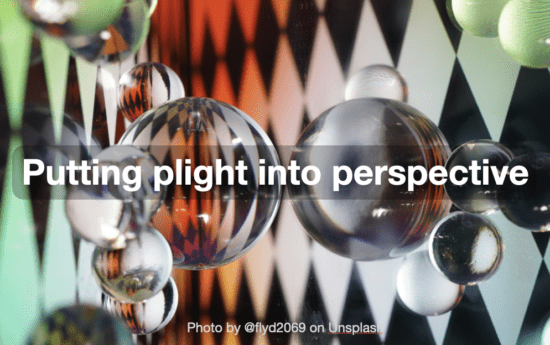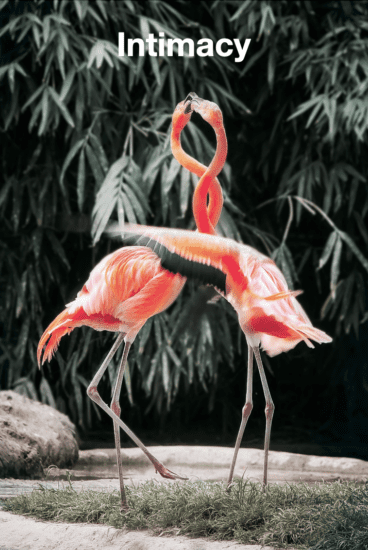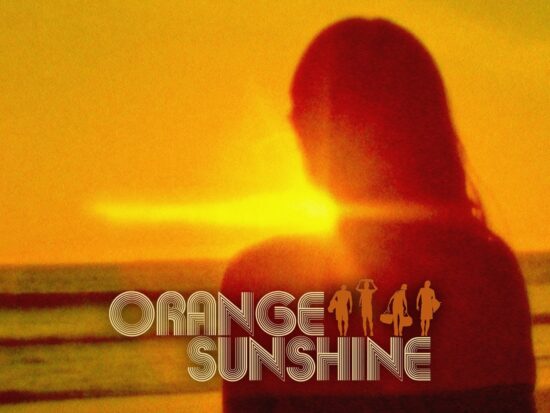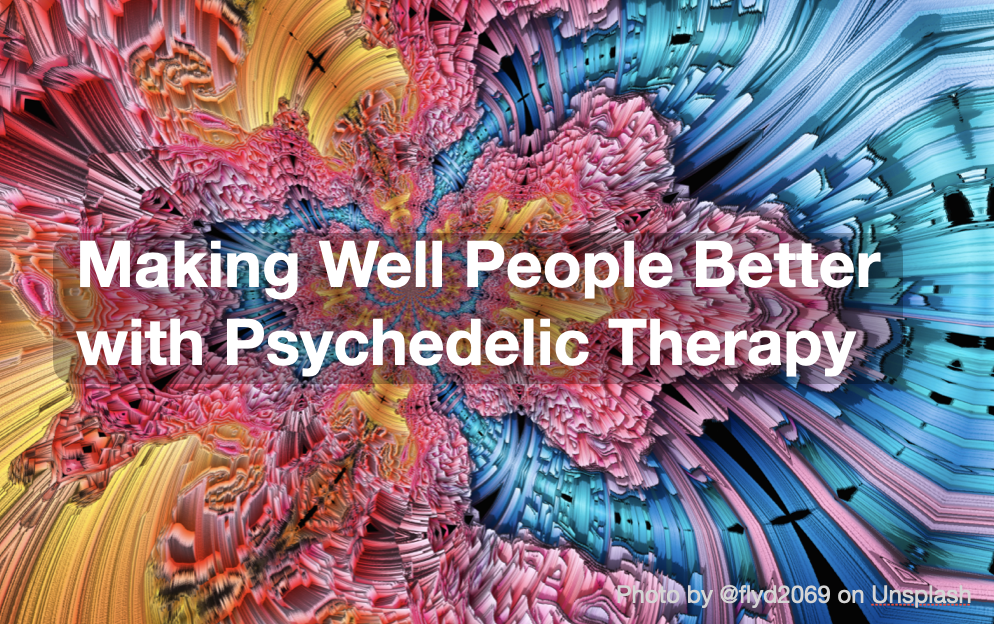The power of psychedelics
There is a lot of exciting news flowing from various prestigious universities and research centres (such as Imperial College, UCL and King’s College London in the UK, Harvard, Yale, UC Berkeley and Johns Hopkins in the US), about how psychedelic drugs (such as psilocybin, ketamine, LSD or MDMA) are providing therapeutic benefits for a number of pathologies, including depression, addiction, PTSD and fear of death. These reports are being featured in bona fide medical papers, too, such as in Science, Therapeutic Advances in Psychopharmacology and NEJM. What began in the early 2000s, with a renewal of interest in the beneficial effects of psychedelics, seems now to be begging to become mainstream. The National Insititute on Drug Abuse released a new report stating that hallucinogen use has reached unprecedented levels in the US. While psychedelics remain highly controlled (Schedule 1) substances around the world, there is a movement afoot to decriminalise them, e.g. psilocybin in Oregon and Colorado as well as multiple other cities around the US. There will certainly be many more studies to follow, expanding into potential treatments for other conditions as far-ranging as autism, Alzheimer’s, Parkinson’s, blindness and anexoria. I have been following and posting updates on my Psychedelics Flipboard. Naturally, such treatments are being done under careful conditions; it’s termed as psychedelic assisted therapy (PAT). I’ve had a few experts on my podcast to discuss how PAT is being done, including Jay Godfrey at Nushama (NYC), Martijn Schirp formerly at Synthesis Institute (Amsterdam), now Retreat Guru (BC Canada), and Dr Alex Belser at Cybin (Seattle). If you’ve not read it yet, I’d also recommend reading the bestelling book, “How to Change Your Mind” by Michael Pollan. While I may have done several hundred trips in my life, I have never tried psychedelics under strictly therapeutic conditions. My belief is that these powerful drugs don’t have benefits only for these significant pathologies. They provide benefits for well people, too. Personally, they have had a positive effect on my well-being by bringing joy, enhancing discovery, helping to bring perspective and connecting with people in profound manners. While there’s already been a lot of press about micro-dosing in Silicon Valley for enhancing creativity and productivity, I believe there’s also much to be said about macro-dosing to make well people better. I’m far from the first to vaunt its merits. The famed American actor, Cary Grant, among others back in the late 1950s, had a positive relationship with LSD. Having dosed up to 100 times, he “credited psychedelic therapy with a personal and professional breakthrough.” {Source} In a three-part interview with Joe Hyams that was ultimately published (without Hymans’ by-line) in Ladies Home Journal in 1963, Grant said, “All the sadness and vanities were torn away… I was pleased with the hard core of the strength I found inside of me.”
Curing well people
It probably seems curious to be talking about curing well people. They aren’t — by definition — classified as ill. However, it seems evident that society is broken, if not sick. In many first world countries, the rate of those being declared clinically depressed or anxious is at record levels. As is suicide. One can certainly put some of this increase down to the expansion of the range of mental health illnesses in the Diagnostics Statistical Manual (DSM), and a greater acceptance to talk about these conditions in the open. However, I would argue that, as a society, we have created an environment where it’s almost a badge of honour to have a mental health condition and to be in therapy. What percentage of these diagnoses is more likely a reflection of a well person who isn’t coping with the normal ebb and flow of life? It would be a far healthier approach for many of these individuals to consider being down or stressed as a normal, if unpleasant, experience rather than slap on a label or diagnosis with a prescription drug and/or perpetual therapy. Life is necessarily about dealing with challenge, and having highs and lows. This is a natural part of our journey and, as I wrote in my article, “The Passing of Time. In Search of Longevity and Eternity: An Utterly Errant Fool’s Errand,” we would do well to rehabilitate sadness, loss and plain disappointment as just a rugged part of our existence. For this, the greatest tool is perspective.
Putting plight into perspective
 One of documented beauties of psychedelics is the abitlity to rewire the brain. What happens to most of us is that, as life goes along, we follow patterns and create beliefs fashioned from our experiences. We then hold on to these beliefs and see them reaffirmed by successive events. Our filter — or wiring — is thus confirmed. And with it, we form our world view and judge things that happen to and around us. It is thus that two people may experience very differently the same event, each according to their wiring. We live in a society that is cleaving and feels increasingly fragile. Virtually all the signs (at least those presented in the media) point to a rocky future, and it seems that, in a defensive mode, more and more people will wish to draw the sheets closer to their chest. To be kind, we can call this urge an instinct for survival. It might also be the domain of those with over-sized egos and a sense of entitlement. How one might counter that inflammation of the ego? I suggest that macrodosing is a good solution.
One of documented beauties of psychedelics is the abitlity to rewire the brain. What happens to most of us is that, as life goes along, we follow patterns and create beliefs fashioned from our experiences. We then hold on to these beliefs and see them reaffirmed by successive events. Our filter — or wiring — is thus confirmed. And with it, we form our world view and judge things that happen to and around us. It is thus that two people may experience very differently the same event, each according to their wiring. We live in a society that is cleaving and feels increasingly fragile. Virtually all the signs (at least those presented in the media) point to a rocky future, and it seems that, in a defensive mode, more and more people will wish to draw the sheets closer to their chest. To be kind, we can call this urge an instinct for survival. It might also be the domain of those with over-sized egos and a sense of entitlement. How one might counter that inflammation of the ego? I suggest that macrodosing is a good solution.
Keeping the ego in check
I’d like to describe for those of you who’ve never ‘dosed’ or ‘shroomed,’ one of the magical effects of psychedelics. Once the ‘trip’ has started properly (usually after some 45 minutes), you start to feel and see things differently. For example, the wall, normally made of stone or cement and painted in a single colour, starts to sway, swirl and vary. At first, these effects are mild, but will strengthen until such point as the once-static paint might take on a life of its own. Images, inspired by micro blips in the design of the wall, may start to appear. The walls. floors and tables can start to look like they’re breathing. These images and visions can evolve to become full-on hallucinations. But before worrying about how a hallucination will distort or distend your vision of reality, the movement of the static and solid is utmost use. As you look at the stone wall that is shifting, it may even start to sort of melt… into a liquid form. At this moment, you can agree that things do not appear as they truly are. What you’ve taken for granted is no longer wholly true. The solid is now fluid. Just as you yourself are. It is profound to review that our bodies are substantially more filled with air and fluids than any hard, immutable elements. Everything is in fact in movement, even if it’s imperceptible to the eye. We are, like the oak beams or stone wall, all in movement and temporary. We can metaphorically melt into the metal chair we’re sitting in. We become one with everything, even the hardest materials, around us. Zooming out, we are fluid like the building in which we’re housed, with the trees outside in the park, the clouds in the sky, the stars in space… the universe. As the trip progresses, we can appreciate that at our core we are all made of the same material, that in the scale of the universe, much less the universe of universes, we are infinitely small and entirely irrelevant. In the grand scheme of things, we’re not as important as we’d like to believe. This is the point where we reel in our ego and remind ourselves of our littleness; how trite are our concerns; and how transient is our life. This is the grace and true gift of a psychedelic trip.
Getting naked with yourself…
It’s not always easy and obviously, on the rare occasion, it can go badly. But at a mor prosaic level, one of the more precarious experiences when tripping is the need to go relieve yourself. Your body’s natural functioning is reminding you of a terrestrial and rather basic need. It brings you back down to earth, so to say. You need to rise from the comfort of your sofa, where you’ve been ensconsed blissfully observing life and feeling alive. The trek to the bathroom begins. Once there, the typically bright lights create an altogether new — often offputting — sensation. The act of urinating is strange. Your habits and instinct will allow for a proper functioning, albeit sometimes with curious feelings. Then comes the difficult moment: the handwashing. It’s not normally the wetting of the hands or the lathering of the soap. It’s the look in the mirror of yourself. You experience a new version of yourself, sometimes morphed, expanded or ruddily vibrant. Your veins and wrinkles seem more evident. A light picks up on your imperfections, your out-of place hair, your heavily dilated eyes. When you look hard at yourself, you can sometimes feel that you are fully naked with yourself. It can be sobering. Although unlike in normal times, you don’t control your thoughts and judgments. Almost like in a dream, your subconscious is in overdrive. Is what you see, what you are… really? Whether it’s during the natural break or back lounging in the sofa, a strong psychedelic trip will frequently bring you up to and into yourself. It’s a time to get naked with yourself. And, while you may not like everything you see, it’s healthy to note — even in your trippy state — that these thoughts do exist, that these imperfections are indelibly part of you. For, in the pursuit of self-knowledge — as Socrates suggested as the first step to wisdom — one can only achieve such by understanding and embracing one’s positive and negative sides, to borrow from the Sergio Leone masterpiece, the good, the bad and the ugly.
Finding psychedelic intimacy
 I’ve been writing now quite a bit about how one of the biggest ills from which many of us are suffering is the ever-growing gap between our external mask and our true selves. I call this the avatar trap. How are we to understand ourselves if we don’t do the hard work of peering into our deeper, darker side? Shunning all that is imperfect, risky and painful, the hedonistic, narcissistic tendencies become unhinged from reality. Enhanced by digital tools, we ply and promote a better version of ourselves through Instagram posts and re-worked online avatars. That gap, that trap, is often exposed during a trip. In that nakedness with yourself, you form a connection with things and others who are in the same space, on the same drug, on their own journey. Naturally, not all things are easy or rosy. Nor is life, of course. But in the little bubble you form with your fellow reveller(s), you see each in a different, more intimate light. With great intensity, you can look into one another’s eyes, the so-called window into your soul. And in good conditions, you will find a new form of openness. stripped of most of the external foibles and farces. I call this psychedelic intimacy. It makes for a strong connection.
I’ve been writing now quite a bit about how one of the biggest ills from which many of us are suffering is the ever-growing gap between our external mask and our true selves. I call this the avatar trap. How are we to understand ourselves if we don’t do the hard work of peering into our deeper, darker side? Shunning all that is imperfect, risky and painful, the hedonistic, narcissistic tendencies become unhinged from reality. Enhanced by digital tools, we ply and promote a better version of ourselves through Instagram posts and re-worked online avatars. That gap, that trap, is often exposed during a trip. In that nakedness with yourself, you form a connection with things and others who are in the same space, on the same drug, on their own journey. Naturally, not all things are easy or rosy. Nor is life, of course. But in the little bubble you form with your fellow reveller(s), you see each in a different, more intimate light. With great intensity, you can look into one another’s eyes, the so-called window into your soul. And in good conditions, you will find a new form of openness. stripped of most of the external foibles and farces. I call this psychedelic intimacy. It makes for a strong connection.
Spreading Orange Sunshine…
 It would be enitrely wrong to suggest that psychedelics will fix everything. However, it’s true that for the many hundreds of times I have been on a trip, I’ve never felt violent. I’m not been inclined to get into conflict. Au contraire, I seek to connect with things and people around me. Have you ever heard of the story of Orange Sunshine? I was fortunate to get to see the premiere of this documentary film in 2016 at SXSW, along with the director and several of the ‘actors.’ In this film, in the context of the late 60s in Laguna Beach, Los Angeles, John Griggs, the (delinquent turned hippie) founder of the “Brotherhood of Eternal Love” movement and his four core accolytes, put together a new formula for life based on two thoughts: (1) there is too much violence in the world; and (2) every time one takes LSD, one feels no need for conflict. As a result, they concluded that the solution was to have everyone take LSD and the world’s conflicts would disappear. So, they went about producing the largest single batch of LSD (acid) ever by the name of Orange Sunshine, which they handed out freely. This rather utopian vision had a number of unreconcible flaws (e.g. legality, funding and scale). Yet, at its core, it’s a keyhole into the power that psychedelics can have. By recognising the infinitely minute importance of our lives in the grand scheme of things, we stop pining for a larger car or house, a bigger title or more power in general can wither away.
It would be enitrely wrong to suggest that psychedelics will fix everything. However, it’s true that for the many hundreds of times I have been on a trip, I’ve never felt violent. I’m not been inclined to get into conflict. Au contraire, I seek to connect with things and people around me. Have you ever heard of the story of Orange Sunshine? I was fortunate to get to see the premiere of this documentary film in 2016 at SXSW, along with the director and several of the ‘actors.’ In this film, in the context of the late 60s in Laguna Beach, Los Angeles, John Griggs, the (delinquent turned hippie) founder of the “Brotherhood of Eternal Love” movement and his four core accolytes, put together a new formula for life based on two thoughts: (1) there is too much violence in the world; and (2) every time one takes LSD, one feels no need for conflict. As a result, they concluded that the solution was to have everyone take LSD and the world’s conflicts would disappear. So, they went about producing the largest single batch of LSD (acid) ever by the name of Orange Sunshine, which they handed out freely. This rather utopian vision had a number of unreconcible flaws (e.g. legality, funding and scale). Yet, at its core, it’s a keyhole into the power that psychedelics can have. By recognising the infinitely minute importance of our lives in the grand scheme of things, we stop pining for a larger car or house, a bigger title or more power in general can wither away.
To be sure, neither do I promote the dosing of all society, nor do I have the folly to believe that we can all get along together to form “a single human race.” However, I’d like to encourage people to consider that, as well people, we could all do with a smidgeon of the benefits of a good psychedelic experience. At the end of the day, life is about our experiences and the relationships we form, not about the size of our bank account nor the name on a wall. As a local English priest once said, life isn’t about the first and last dates on your epitaph. It’s in the hyphen or space between them. Life takes on another scale, another dimension when we can find deeper meaningfulness and consider our purpose as being in service of others and of somthing bigger. Under the right conditions, psychedelics have a magic ability of helping bring that vision — albeit hallucigenetically — to life.












Really connect with this quote from Michael Pollen
“Think of your mind as a snow covered hill and thoughts as sleds…After a while the grooves get so deep…you can’t go down any other way… Think of the psychedelic experience as a fresh snowfall filling all the grooves and suddenly you can take any path you want down the hill”
What a lovely description… Should appeal heavily to all those who love skiing powder at the very least!
Feeling compelled to comment, but without the mental space that such “medicines” sometimes afford (i.e. I’m working) I may not have my thoughts completely organized…which reminds me of me of the 80’s formulation of the perennial reminder to at least occassionally “stop making sense” (as well as college class motto that despite everything things are generally “same as it ever was”…which is all to say, such provision of free mental space is both a gift and a human requirement. I agree that one of the fascinating things is that despite earnest attempts to rationally build psychedelic facilitated therapy, including ongoing clinical trials that still need to describe and “measure” benefit, the culture itself is already well ahead, and these drugs are widely available, and apparently widely used at least partly due to a requirement to deal with anxiety/trauma/depression that do appear to be at least more widely recognized damage correlated ironically with greater technological material prosperity. I agree that its difficult to directly realize a “one-species” consciousness, and yet there does still seem to be a driving collective force in some things. thank you for your interest, efforts and work towards exploring advanced methods of connection, communication and laying a robust resilient, living adaptable groundwork for what “i” (meaning whatever provisional concept of “i” one is comfortable with) would refer to as marriage of wisdom and method. Thank you as always Professor.
Plenty of talking heads, eh!?
One of the tremendously important paradoxes is the need for balance yet to be brazen. In other words, to stand out for something you need to be provocative. To stand up for something you need to be brave. But to get anywhere in these types of conversations, we need context, nuance and good sense.